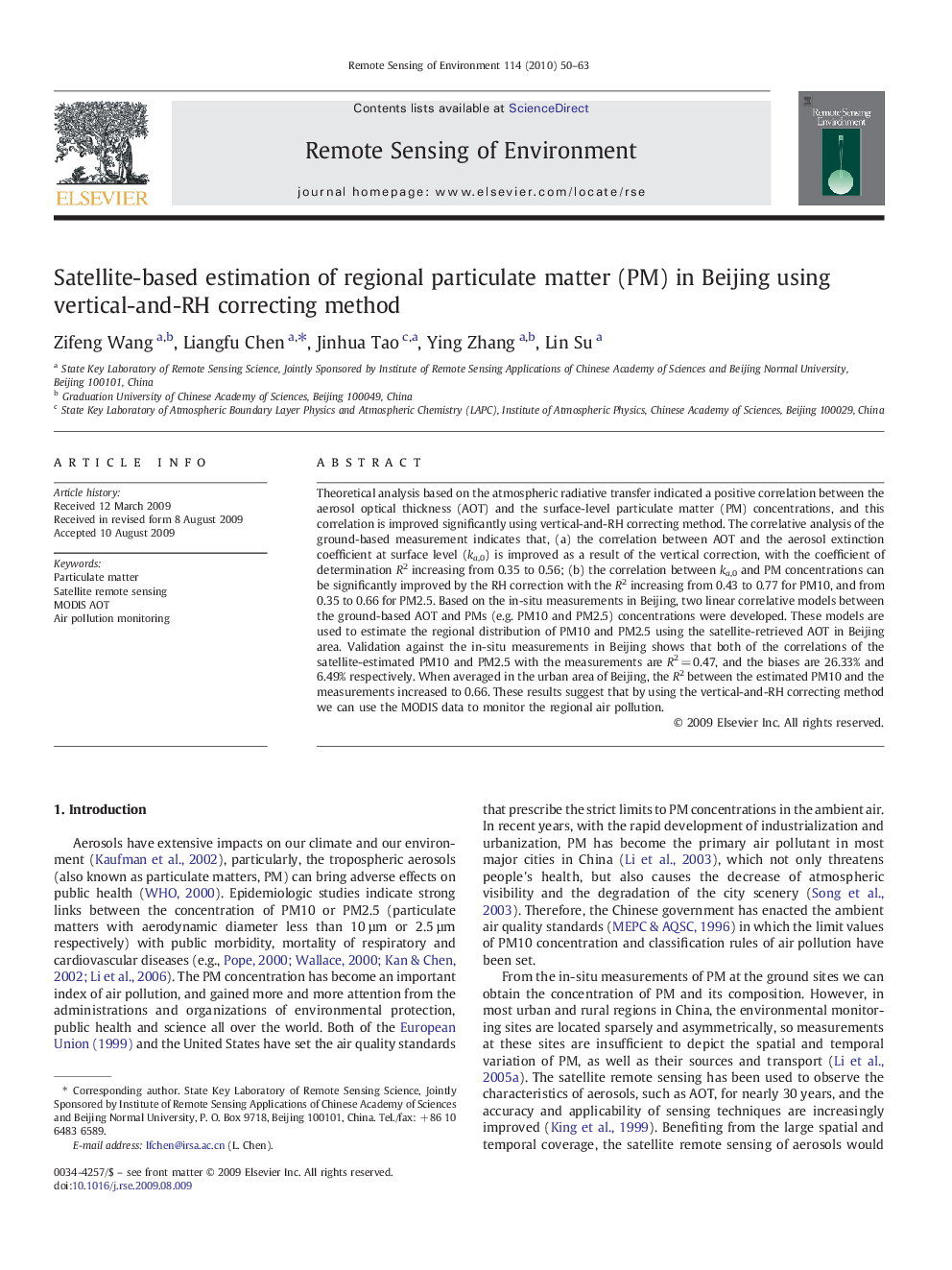| Article ID | Journal | Published Year | Pages | File Type |
|---|---|---|---|---|
| 4459927 | Remote Sensing of Environment | 2010 | 14 Pages |
Theoretical analysis based on the atmospheric radiative transfer indicated a positive correlation between the aerosol optical thickness (AOT) and the surface-level particulate matter (PM) concentrations, and this correlation is improved significantly using vertical-and-RH correcting method. The correlative analysis of the ground-based measurement indicates that, (a) the correlation between AOT and the aerosol extinction coefficient at surface level (ka,0) is improved as a result of the vertical correction, with the coefficient of determination R2 increasing from 0.35 to 0.56; (b) the correlation between ka,0 and PM concentrations can be significantly improved by the RH correction with the R2 increasing from 0.43 to 0.77 for PM10, and from 0.35 to 0.66 for PM2.5. Based on the in-situ measurements in Beijing, two linear correlative models between the ground-based AOT and PMs (e.g. PM10 and PM2.5) concentrations were developed. These models are used to estimate the regional distribution of PM10 and PM2.5 using the satellite-retrieved AOT in Beijing area. Validation against the in-situ measurements in Beijing shows that both of the correlations of the satellite-estimated PM10 and PM2.5 with the measurements are R2 = 0.47, and the biases are 26.33% and 6.49% respectively. When averaged in the urban area of Beijing, the R2 between the estimated PM10 and the measurements increased to 0.66. These results suggest that by using the vertical-and-RH correcting method we can use the MODIS data to monitor the regional air pollution.
